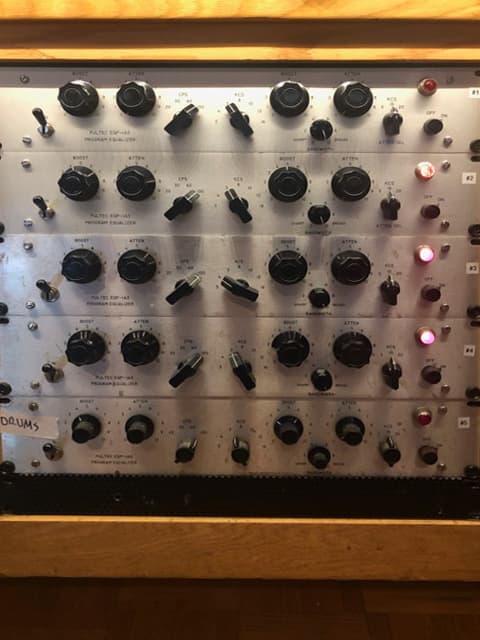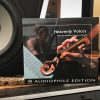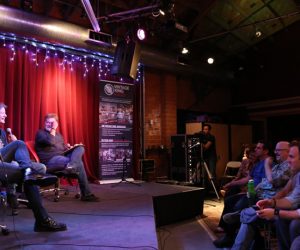
Top 5: Bob Clearmountain
Bob Clearmountain is studio royalty. He has worked with major acts such as Bruce Springsteen, the Rolling Stones, Toto, Bon Jovi and Bryan Adams. Bob sits with AudioTechnology to discuss his Top 5 essential studio tools.
By Joe Matera
14 June 2022
72-INPUT SSL 4000G+ CONSOLE
This console is so heavily modified now. I bought it 27 years ago, and SSL built it for me. It’s just an amazing sounding console — the best analogue mixing desk on the planet, in my opinion. It also has the best automation. The automation computer is 27 years old and the last software update on it was 1995. Even though it runs on floppy discs there’s still no other automation system that comes close — when I try mixing with a current DAW or a digital desk it feels as though I’ve gone back to the stone age. If people knew how well this automation worked somebody would come along and build a new system that’s compatible and runs on the Mac or PC. I can’t believe what the world has to put up with nowadays. I think that moving fader automation is like trying to mix with your nose. As opposed to a VCA type system there are so many operations that you would lose when the fader has to move.


APOGEE SYMPHONY MKII INTERFACE
I have two MkIIs and three MkIs. I use two Pro Tools rigs — a multi-track rig and a print rig. The multi-track rig uses three MKIs with a total of 88 D/As and 24 A/Ds. I mainly use the A/Ds for sends from the desk to effects plugins in aux channels in the DAW session. I don’t do a lot of recording on that console but I do use a lot of plugins as outboard gear sent from auxes on the desk. There’s another MkII in the control room which is mainly used as an effects line mixer, among other musical chores. The Symphony I/O is by far the best sounding interface for any DAW on the market. It’s also very stable.
Not many people know it but Apogee was the first company to figure out why no-one liked the harsher sound of digital gear in the 1980s, and how to go about rectifying this. A friend of my wife’s [Australian audio legend Bruce Jackson (RIP) — ed.] back when she was president of Soundcraft America — worked out that the harshness was caused by anti-aliasing filters which are a necessary part of every A/D converter. He figured out that smoothing the slope to a specific curve — rather than using the sharp brick-wall shaped filter that nearly everyone else used — would totally clean up the sound of the conversion. Then everybody copied it. So Apogee is actually the reason digital became an acceptable recording medium.

IZOTOPE PLUGINS
About half the work I do is comprised of live concert videos and live albums. There is always going to be buzzes and noise, or weird things going on like squeaks or feedback. iZotope is the best thing to get rid of all that stuff. They also have this thing called Neutron 3 that I use on harsh vocals. I set a threshold at a certain frequency and it will gently dip it down if that frequency jumps out. It does it quite efficiently. Everything they make is brilliant, really. I also use Spectral Repair which is like Photoshop for audio. You can see the offending noise on the screen and you just surround it, render it, and it’s gone. It doesn’t sound like you’ve chopped anything out, it sounds coherent and smooth.

APOGEE PLUGINS
The Domain plugin was designed around my effects workflow which is something I have developed over the years. This once consisted of lots of outboard gear and a few channels on the console, but is now conveniently packaged all within the one plugin.
The Clearmountain Phases is my latest plugin. I’ve always loved the MXR rackmount Phaser and Flanger that we used to use back in the ’70s and ’80s. We used them at The Power Station and Mediasound in New York [where Clearmountain worked in that period]. The Flanger was always used on a Fender Rhodes for the R&B records that I worked on back then. The plugin is a really a precise duplication of the original rack gear but with expanded features as well. It’s capable of true ‘zero crossing’ tape flanging at a push of a button, manual, or auto-sweep. If you ever had to do real tape flanging you would know that it’s a whole operation just to do that. You can also do a chorus type thing with the Phaser or Flanger when using them in stereo mode. You can separate the two oscillators and place them opposite each other, at either 90 or 180 degrees. This results in a beautiful, swirling stereo chorus kind of sound.
Apogee also makes a Pultec EQP-1A and an MEQ, an Opto Compressor (like the LA-3A), a modern compressor called Mod Comp, a modern graphic EQ called Mod EQ and their ECS Channel Strip, all equally incredible. It’s the same fanatical people making the plugins who design the award-winning converters. They only make a few but I’ve found that they’re better than the competition.
PULTEC EQP-1A3
I have a rack of five of these. One is usually on a snare while the others I will use on guitars, vocals and pianos. It’s particularly a wonderful thing to use on a piano when combined with the rackmount version of the SSL Stereo Bus Compressor. It was the first equaliser I was introduced to when I started back in 1972. The console Mediasound had back then had a useless equaliser — It didn’t do anything. But we had these Pultec EQP-1A3’s in separate outboard boxes that would usually be scattered around the studio’s three rooms. I really loved what they did so I would come in an hour before anyone else, collect them all from the other rooms and pile them up in my room. The other engineers would come around looking for them and see me and say, “Ohh, so you have all the Pultecs!” and I’d say, “Yeah, now go away.”

























Good read , how can I get good studio equipment